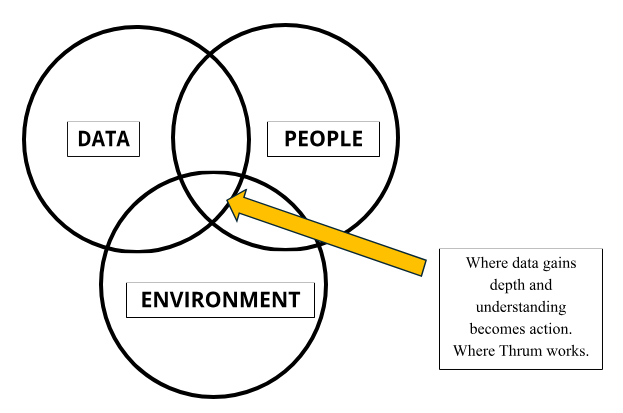Veterans of the business world know trends come and go. Pick up a Forbes magazine, check out the latest book from the EOS gang (Data: Harness your Numbers to go from Uncertain to Unstoppable), or just read your LinkedIn feed and you’ll see influencers extolling the need to gather and analyze data.
Collecting and emphasizing data is nothing new, but the current conversations pivot on more than just “know your ROI.” Often teams would diligently work to know their ROI only to do very little with the data once they had it. And when it came to survey data, business history is full of stories about “research” that, when compiled, collected dust in a three-ring binder by the back door. Literally.
Nearly every company is swimming in data, yet most of it never sees the light of day. Analysts estimate that a staggering 68 % of enterprise information goes completely unanalyzed, and only one-third of all collected data is ever put to use. Little wonder, then, that just 23–24 % of organizations can honestly call themselves “data-driven.” Even more alarming, a mere 5 % say their people are truly fluent in data. That leaves the vast majority of businesses making high-stakes decisions on intuition, gut checks, or incomplete snapshots— while a sea of insight just sits there, gathering digital dust.
What’s driving the renewed fascination about data? There are three reasons, among many:
- External stakeholders require greater proof that organizations are achieving the outcomes “as advertised.”
- Executive Leaders are under pressure to do more with less.
- Technology is changing the game.
Most firms collect mountains of data, yet few hire analysts who can marry math with business context. That leaves big questions unanswered:
What do these numbers mean?
Are these numbers important or misleading?
Where might numbers miss the real drivers or influences?
There’s a story to be told in the numbers, one that emerges from the most powerful and surprisingly influential source: People. In the same way marketers seek to learn about people’s preferences and motivations, analysts can trace a number trail to the end and yet people end up acting in ways the numbers alone can’t explain. If we drew a circle about how it works, it would look like this:
Some would say you only need data and that the other two influences, people and environment, shape the data. Others would say that the only thing that matters is people and that they tell the real story. Still, others emphasize the environment, the market forces, culture, and operational realities that shape both data and people and argue that people are subject to these contextual shaping influences.
Thrum works in the confluence of these three, triangulating the data (existing or new), stories, and influences through quantitative, qualitative, and ethnographic strategies to understand what is going on and explain what the numbers mean, where they’ve been trending, and what is ahead.
Ready to make your numbers talk?
If your dashboards are long on digits but short on direction, let’s have a conversation. At Thrum, we sit at the intersection of people, data, and environment—turning scattered stats into clear next steps you can act on tomorrow. No buzzwords, no one-size-fits-all template—just a 30-minute call where you can share where insight is leaking and we can talk about how to plug the gap.
Curious? Drop us a note and we can talk about how to turn that digital dust into real-world momentum. If your numbers aren’t telling a clear story, let’s talk.




